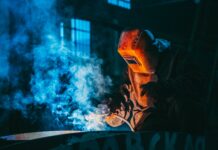
Forklift Safety Quiz: Test Your Safety Knowledge
Forklift Safety Quiz : In the fast-paced world of industrial operations, forklifts play a crucial role in the movement of goods and materials. These powerful machines simplify tasks that would otherwise be time-consuming and labor-intensive. However, their power also comes with significant risks. Forklift accidents can lead to injuries, damage to property, and even fatalities. To ensure the safety of both operators and those working in proximity to forklifts, it’s imperative to have a solid understanding of forklift safety measures. This article will test your knowledge with a Forklift Safety Quiz, covering essential topics and guidelines that every forklift operator and worker should be aware of.
Now, let’s delve into the details of each section:
Introduction to Forklifts
Forklifts, often referred to as lift trucks, are industrial vehicles designed for the efficient movement of heavy materials and goods within warehouses, factories, and other industrial settings. They are equipped with fork-like attachments that can be raised and lowered to lift and transport loads.
Forklift Types and Variations
There are various types of forklifts, each designed for specific tasks. These include counterbalance forklifts, reach trucks, and order pickers, among others. Understanding the differences between these types is crucial for safe and efficient operation.
Forklift Components
To operate a forklift safely, one must be familiar with its key components. These include the mast, carriage, forks, and hydraulic system. Knowing how these parts function is essential for maintaining control and safety.
Operator Training and Certification
Proper training and certification are fundamental for forklift operators. This ensures that they have the necessary knowledge and skills to operate the equipment safely and effectively.
Pre-Operational Checks
Before using a forklift, operators must perform daily inspections to identify any potential issues. This helps prevent accidents and ensures that the forklift is in good working condition.
Safe Operating Procedures
Operating a forklift requires adhering to specific safety guidelines, such as observing speed limits, using horns, and making controlled turns. These practices minimize the risk of accidents.
Load Handling and Stability
Understanding a forklift’s load capacity and the principles of load stability is essential to prevent tip-overs and load spills.
Pedestrian Safety
Forklifts and pedestrians often share the same workspace. Communicating effectively and being aware of each other’s presence is vital to avoid accidents.
Warehouse Layout and Design
Optimizing the layout and design of a warehouse or industrial facility can significantly impact forklift safety. Proper markings, signage, and traffic flow are essential considerations.
Maintenance and Repairs
Regular maintenance is necessary to keep forklifts in good working condition. Operators should also be trained to recognize signs of wear and damage.
Emergency Response
In the event of an accident or equipment malfunction, knowing the correct procedures for emergency response, including first aid and reporting, is critical.
Regulatory Compliance
The Occupational Safety and Health Administration (OSHA) has specific regulations governing forklift operation. Ensuring compliance with these regulations is essential to avoid fines and penalties.
Forklift Safety Culture
Creating a culture of safety within an organization promotes awareness and adherence to safety protocols among all employees.
Continuous Improvement
Regularly reviewing incidents and near misses and implementing changes based on feedback and analysis is essential for ongoing safety improvement.
Conclusion
In conclusion, forklift safety is of paramount importance in industrial environments. Understanding the various aspects of safe forklift operation and maintaining a culture of safety within an organization are key to preventing accidents and ensuring the well-being of all employees.
Fall Protection Safety Quiz: Test Your Safety Knowledge
Emergency Action Plan Safety Quiz: Test Your Safety Knowledge
Air Contaminants and Dust Safety Quiz: Test Your Safety Knowledge
Industry Safety Quiz: Test Your Safety Knowledge
OSHA Safety Quiz: Test Your Safety Knowledge
FAQs (Frequently Asked Questions)
- What is the most common type of forklift used in warehouses?
- Counterbalance forklifts are the most commonly used type of forklift in warehouse settings.
- How often should forklift operators undergo training and certification?
- Forklift operators should be retrained and re-certified every three years or when there are significant changes to their job duties.
- What is the purpose of load capacity plates on forklifts?
- Load capacity plates provide information on a forklift’s maximum load capacity, helping operators avoid overloading.
- What should operators do if they encounter an unfamiliar or hazardous situation while operating a forklift?
- Operators should stop the forklift, assess the situation, and seek guidance from a supervisor or safety officer if needed.
- How can employees contribute to a culture of forklift safety in the workplace?
- Employees can contribute by reporting safety concerns, participating in safety training, and following safety procedures consistently.

























I think the admin of this web page is genuinely working hard for his web page, because here every stuff is quality based information.
реферат по истории 1 курс
Wow news for all us
new texts were rewritten
Greatest news for all us
Chaming news for all us
A handwritten book is a book
ancient and medieval Latin,
Good news for all us
books in ancient times was papyrus
so expensive material
Testaru. Best known
way. Handwritten book